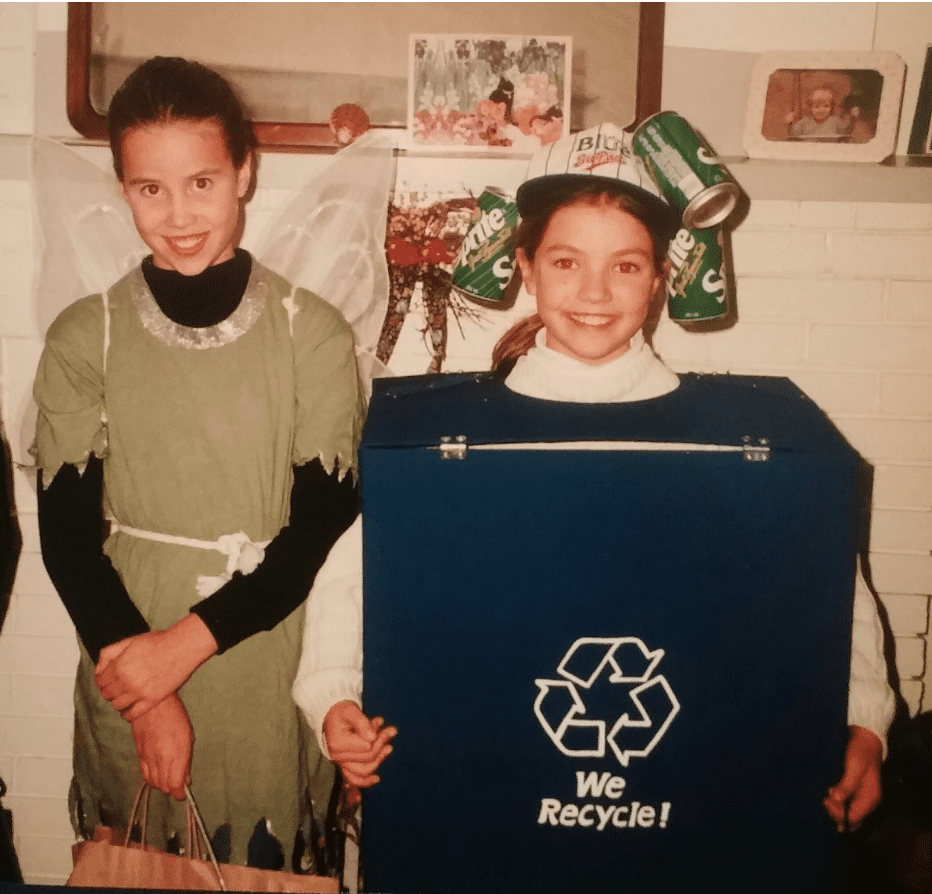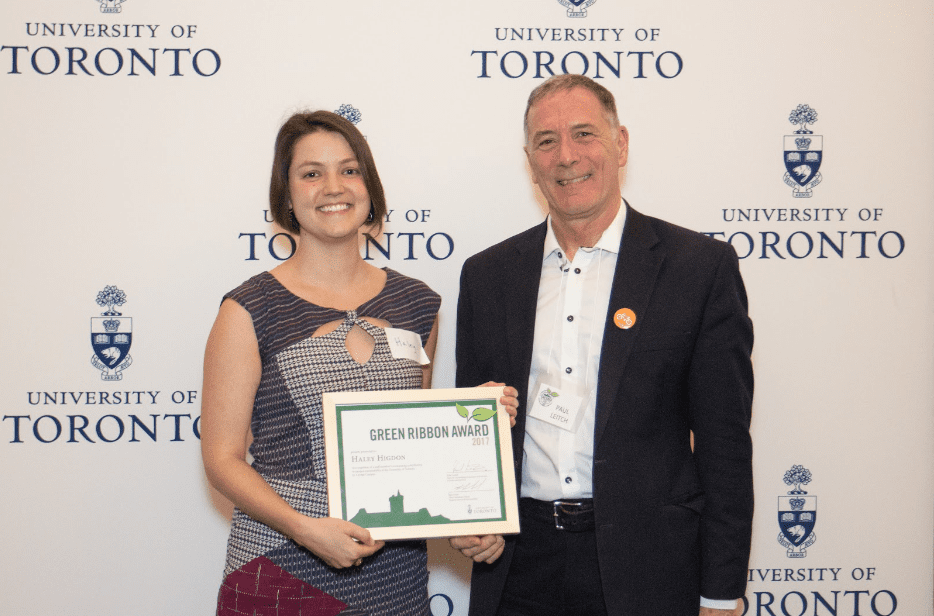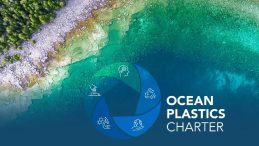
1) Tell us a bit about yourself and why you love the #plastic-free movement?
My name is Haley Higdon and I am a guest and settler on Turtle Island (North America). I am the Program Director for Natural Curiosity, an environmental and Indigenous education initiative at the Ontario Institute for Studies in Education, University of Toronto. I oversaw the development and publication of the book, Natural Curiosity 2nd Edition: The Importance of Indigenous Perspectives in Children’s Environmental Inquiry.
I am a passionate environmentalist. That passion started when I was very young: When my friends were dressing up as Tinker Bell for Halloween, I dressed up as a recycling bin! For the last 6 years, I have been sharing about the #plastic-free movement on social media with 50 Shades of Green where I provide tips for whatever shade of green you want to be. I was a 3 R’s Ambassador for the City of Toronto and also a Green Ambassador for the University of Toronto where I received the Green Ribbon Award in 2017. I also did a TEDx Talk on living a Zero-Waste Lifestyle that has over 125,000 views.
I love the plastic-free movement because it reminds me that there is a community of people who realize the importance of working together to stop plastic pollution.
2) What actions do you take to reduce your plastic use in your daily life?
For many years I have been using “refuse” as my first “R” – refuse what you don’t need. I am really good at saying “no thank you” to items that I don’t actually need. There are plenty of opportunities to refuse! I encourage people to start by refusing single-use plastic. This includes plastic bags, bottles, cups, lids, straws, and cutlery. Single-use plastic can be avoided with a little bit of planning. When I head out of the house I make sure to bring my zero-waste kit with me. This includes
- Cloth shopping bag
- Reusable water bottle
- Bamboo cutlery kit (no need to buy a kit, just throw some cutlery in your bag)
- Reusable straw
- Cloth napkin
- Tupperware (or whatever) container for possible leftovers
3) What are the challenges you face when taking action?
Our systems aren’t set up to support people with reducing their plastic waste. I have the privilege of living in a big city where I have access to low-waste grocery stores, and where I can buy most of my food, cleaning products, and personal care items in reusable containers, but even with this access, being plastic-free still has its challenges. Many people only have access to conventional grocery stores which makes the refusal of plastic much more difficult.
There is a misconception that recycling is a solution to the plastic crisis. Unfortunately, only 9% of the plastic that has ever been produced has been recycled. There needs to be a shift away from the responsibility falling on consumers alone to deal with the plastic pollution problem; governments, businesses, and corporations need to step up and take responsibility to support a more sustainable future.
4) What’s your greatest motivation?
The natural world! Prioritizing time in nature is essential. I believe that everyone should have the opportunity to fall in love with the natural world. As Robin Wall Kimmerer said: “Knowing that you love the earth changes you, activates you to defend and protect and celebrate. But when you feel that the earth loves you in return, that feeling transforms the relationship from a one-way street into a sacred bond.”
5) Who inspires you in terms of activism and making a difference in the environment?
I have had the honour and privilege of working with many Indigenous educators and community members through my work as Program Director of Natural Curiosity. Doug Anderson, the author of the Indigenous lenses on the 2nd Edition, in particular, has inspired me to shift my understanding of activism from a focus on stewardship to reciprocity. Acts of stewardship often imply a hierarchical relationship with the natural world, that we as humans are above or separate from it. I have learned from Indigenous perspectives that forming a reciprocal relationship with the earth can have a much greater impact, especially when thinking seven generations into the future.


6) What has been your favorite experience so far?
This summer, Natural Curiosity launched our in-person professional learning on the land, Aki Kinomaagewinan: Engaging Educators and Youth in Indigenous Land-Based Learning through Natural Curiosity, in partnership with ENAGB, an Indigenous youth organization. This outdoor offering took place in Toronto along the Humber River at an Indigenous teaching lodge. Together, our intergenerational learning community engaged in land-based learning around our plant and animal relations, Anishinaabe knowledge of/with the land, and principles of reciprocity, all nestled within the Natural Curiosity framework for inquiry-based, environmental education. This learning relates to the plastic-free movement, as the educators involved will go back to their schools and share a much deeper understanding of reciprocity and why we need to give back to the earth, and not just continue to take. This makes the movement so much more meaningful and purposeful than just telling people we need to reduce, reuse, and recycle.
7) What are some of your tips for reducing plastic waste?
Be kind to yourself. Try to plan ahead, but if you end up consuming more plastic than you had hoped, think about a plan for next time to help you reduce it in the future. I encourage you to think of the words of Anne-Marie Bonneau (Zero Waste Chef), “We don’t need a handful of people doing zero waste perfectly. We need millions of people doing it imperfectly.”
8) What are your long-term goals?
I want to inspire more people to see the many ways that they can join the plastic-free movement. I also want to encourage people to put pressure on the government and corporations to take responsibility for reducing our reliance on plastic and fossil fuels. Most importantly, I want to support people with understanding the importance of creating a reciprocal relationship with the Earth. This is connected to the process of Truth and Reconciliation in Canada because reconciliation between Indigenous and non-Indigenous Canadians also “requires reconciliation with the natural world … reconciliation will never occur unless we are also reconciled with the Earth.” (TRC Final Report Executive Summary, p. 18)
9) What future events or initiatives do you have planned?
In my role as Program Director of Natural Curiosity, I am excited about a Climate-Focused Professional Learning Opportunity that we are offering this school year. This series is for educators who wish to deepen their own inquiry into the ecology of Natural Curiosity — growing a learning environment where educators and students experience themselves in relationship with the Land and each other in the community — and how this pedagogical approach can be applied to climate change education.
10) What would you say to future generations to come?
I’m sorry.
And remember to vote!
Find out more about Haley:
Natural Curiosity
Haley/50ShadesOfGreen
